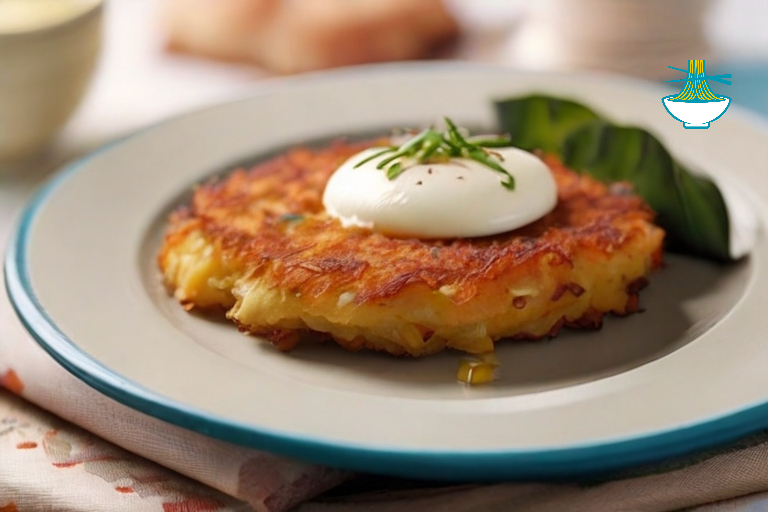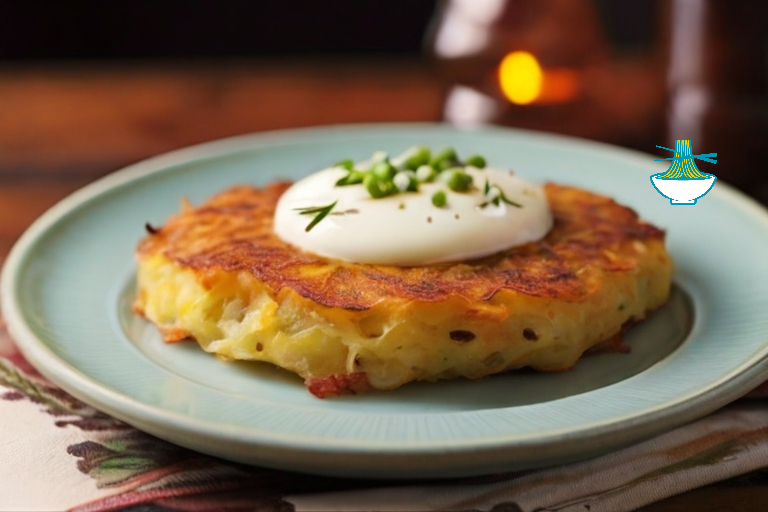Nestled in the heart of the picturesque Alpine region, Austrian cuisine is a tapestry of flavors that reflects the rich cultural heritage of this enchanting country. Among the many culinary gems that grace Austrian tables, none captures the essence of comfort and simplicity quite like the beloved Rösti.
Derived from the Swiss-German word "rösten," meaning "to roast," Rösti has become a quintessential dish in Austrian households, celebrated for its golden-brown, crispy exterior and tender, flavorful interior. This humble yet irresistible potato creation has earned its place as a favorite side dish or even a delightful main course.
Join us on a culinary adventure as we explore the art of crafting the perfect Austrian Rösti, delving into its history, ingredients, and the secrets behind achieving that unmistakable crispiness. Whether you're a seasoned chef or an adventurous home cook, get ready to immerse yourself in the delicious world of Austrian Rösti, where every bite tells a story of tradition, flavor, and alpine warmth.
Ingredients:
- 4 large potatoes, peeled and grated
- 1 small onion, finely chopped
- 2 tablespoons butter
- 2 tablespoons vegetable oil
- Salt and pepper to taste
- Fresh parsley, chopped (optional, for garnish)
Instructions:
1- Grate the Potatoes: Using a box grater or a food processor, grate the peeled potatoes. Place the grated potatoes in a clean kitchen towel and squeeze out excess moisture.
2- Combine Ingredients: In a large mixing bowl, combine the grated potatoes with the finely chopped onion. Season the mixture with salt and pepper according to your taste.
3- Heat Butter and Oil: In a large skillet, heat the butter and vegetable oil over medium heat. The combination of butter and oil helps achieve a perfect balance of crispiness and flavor.
4- Form Rösti Patties: Take a handful of the potato mixture and form it into a flat, compact patty. Place the patty into the hot skillet, pressing it down with a spatula to ensure even cooking.
5- Cook Until Golden-Brown: Allow the Rösti to cook undisturbed for about 5-7 minutes or until the bottom is golden-brown and crispy. Carefully flip the Rösti using a spatula and cook the other side until it, too, is golden and crispy.
6- Repeat and Keep Warm: Repeat the process with the remaining potato mixture, adding more butter and oil to the skillet as needed. You can keep the cooked Rösti warm in the oven on a low setting while preparing the rest.
7- Garnish and Serve: Once all the Rösti patties are cooked to perfection, garnish with chopped fresh parsley if desired. Serve hot as a delightful side dish or even as a main course.
Enjoy your homemade Austrian Rösti – a delicious blend of crispy goodness and comforting flavors!
Nutritional Values:
The nutritional values for the ingredients in the Austrian Rösti recipe can vary based on specific brands and quantities used. However, I can provide approximate values for the main components:
4 Large Potatoes (about 800g):
- Calories: 680
- Carbohydrates: 156g
- Protein: 16g
- Fat: 1.6g
- Fiber: 16g
Benefit: Rich in carbohydrates, potatoes provide a good source of energy. They also contain dietary fiber, vitamins (such as vitamin C and B vitamins), and minerals like potassium.
1 Small Onion (about 100g):
- Calories: 40
- Carbohydrates: 10g
- Protein: 1g
- Fat: 0g
- Fiber: 2g
Benefit: Onions add flavor to the dish and are a good source of antioxidants. They contain vitamins C and B6, as well as dietary fiber. Onions also have potential anti-inflammatory and immune-boosting properties.
2 Tablespoons Butter (about 28g):
- Calories: 200
- Carbohydrates: 0g
- Protein: 0.2g
- Fat: 22g
- Fiber: 0g
Benefit: Butter adds richness and flavor to the Rösti. It contains saturated fats and is a good source of vitamin A. However, moderation is key, as excessive saturated fat intake may have health implications.
2 Tablespoons Vegetable Oil (about 28g):
- Calories: 240
- Carbohydrates: 0g
- Protein: 0g
- Fat: 28g
- Fiber: 0g
Benefit: Vegetable oil is a source of healthy fats, including monounsaturated and polyunsaturated fats. It provides energy and supports the absorption of fat-soluble vitamins. Choosing heart-healthy oils can contribute to overall well-being.
Salt and Pepper (amounts may vary, usually minimal):
- Negligible caloric contribution
Benefit: While used in moderation for flavor, salt is essential for maintaining electrolyte balance in the body. Pepper adds a pungent kick and contains antioxidants that may have anti-inflammatory properties.
Fresh Parsley (optional, for garnish):
- Negligible caloric contribution
Benefit: Parsley is a nutrient-dense herb, rich in vitamins A, C, and K. It also contains minerals like iron and folate. Parsley may contribute to improved digestion and has potential anti-inflammatory effects.
These values are rough estimates and can vary based on factors such as the size of the ingredients and specific product brands. Additionally, the cooking process may alter the nutritional content, especially with oil absorption during frying. It's always a good practice to refer to specific product labels for accurate information.

Comments